CUSTOMER RECIPES
Water 1/4 cup
Milk 8 oz.
Oil almond 2 Tbsp
Honey to taste.
Boil Turmeric in water until it forms a thick paste. You can store turmeric paste up
to 10 days in the refrigerator, so prepare more, if you like
Add the milk and oil to the cooked turmeric paste . As soon as it boils, remove from
heat and sweeten to taste.
In India , turmeric is considered the standard anti-inflammatory,
and yogis use it to help keep their tendons and ligaments free from
injury and to assist in their asana practice . In the same way, it
minimizes pain and inflammation related to any kind of exercise or
strenuous activity. Turmeric is a wonderful tonic for the female
system. Turmeric is good for the skin elastics as well.
Golden Milk heals
Internal injuries * Repairing nerve damage* Good for tissue healing* Joint pain
Ingredients Benefits
Turmeric
Read more on anti- inflammatory and anti- cancer medical results
http://www.ayurvedacollege.com/articles/students/turmeric
analgesic, antibacterial, anti-inflammatory, anti-tumor, antiallergic,
anti-oxidant, antiseptic, antispasmodic, astringent,
carminative, cholagogue, digestive, diuretic, stimulant,
Turmeric has been proven effective in treating some of the most
intense ailments afflicting the world today including: Arthritis,
Cancer, Alzheimer's Disease, Diabetes, Multiple Sclerosis,
Atherosclerosis, HIV/AIDS, Sexually Transmitted Diseases
(Hepatitis-C, Genital Herpes) , Irritable Bowel Syndrome,
Indigestion, Inflammation, Acne, Urinary Tract Infections, Kidney
Infections, Gallstones, Anemia, Hemorrhoids, Liver Disease,
Leprosy, Amenorrhea, Edema, Bronchitis, Common Cold,
Headaches, Conjunctivitis, Bursitis, food poisoning, parasites,
fever, diarrhea, poor circulation, lower back and abdominal pain. It
can also be used as a mosquito repellent, wound healer, and
immediate cure for scorpion stings. Turmeric helps balance the
female reproductive and lactation systems, and in men it purifies
and improves the health of semen. It is used to treat external ulcers
that would not respond to other treatment
Turmeric is also a powerful anti-inflammatory herb. It has been
shown to be helpful in the treatment of Arthritis, Rheumatoid
Arthritis, Osteoarthritis, injuries, trauma, and stiffness from both
under activity and over activity . It is also helpful after surgery to
decrease pain, inflammation and accelerate healing. One study
conducted in 1986 showed that a dosage of 1200 mg of curcumin a
day was more effective in reducing post-surgical inflammation than
either the placebo group or anti-inflammatory.
Almond Oil
It is rich in vitamins like B1, A, B6 and B2 and hence used as anti-inflammatory and
immunity booster. Highly healing and rejuvenating - stimulated the repair of cells.It
has heals skin disorders such a eczema and psoriasis.
Best thing there is for pacifying vatta.
Milk
In Ayurvedic medicine said to bet he most rejuvenate food on the planet.Milk
provides special and unique nutrition that cannot be derived from any other type of
food. Milk, nourishes all the tissues and helps growth and rejuvenation - you’ll be as
good as a new born baby :) Raw (home boiled) organic milk is best.
Calcium - bone building
Juice of 1 lemon
Simply bring 2 Litres of fresh milk to a rolling boil in a large pan, over a low-medium heat, stirring often to avoid burning on the bottom of the pan
Remove from the heat and immediately pour in the juice of 1 lemon (approx 5 tbsp) whilst stirring the milk in one direction only
The curds and whey separate - leave to rest and cool for a couple of hours (30 mins will do if you don't have time to wait!)
Pour into a sterilised (boiled) muslin cloth/bag/old t-shirt lined colander, sitting on a large bowl to collect the whey and leave for at least 3 hours - if you have somewhere to hang it from, tie the ends and hang with a bowl underneath
Transfer the curds from the muslin to a sterilised glass jar and store in the fridge - made with raw milk this keeps fresh for at least a week
If you like you can stir in some sea salt before storing, or else simply add freshly milled salt and pepper as you serve - it's also delicious with honey though!
If you get a softer curd after separation, it can take an overnight hang and may need a helping hand with stirring and squeezing to get the whey drained - this tends to happen if the milk isn't heated well enough, so be patient and allow a rolling boil to be reached, without burning the bottom!
The whey can be kept, stored in the fridge for a week as well - it can be used for all kinds of things - soak oats overnight in it and add chopped dates and cinnamon for a delicious breakfast, or use it in smoothies, all kinds of baking (biscuits, cakes, pancakes, bread etc.) or just sweeten with vanilla sugar for a fortified drink!
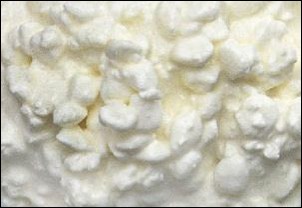
150g plain yogurt
1 tbsp of fresh lemon juice
Bring the milk to almost a boil in a heavy-based saucepan, you just start to see the bubbles and you need to turn the heat all the way down. Stir in all the yogurt and lemon juice and keep stirring until you see the curds separating from the yellowish whey. At this point turn the heat off.
Line a large sieve with muslin cloth and place over a large bowl or saucepan. Pour the cheese into the lined sieve, you might want to save the whey water for another receipt or just drink it. Pour some cold water through the cheese, wrap it in the muslin cloth and hang it from the tap over the sink to allow the excess water to drain for 10-15 minutes.
Then, keeping it tightly wrapped, place it on a plate with some kitchen cloth towels to catch the excess liquid with a heavy weight on top (I use my heavy cooking books on top of the small chopping board to prevent from getting wet, you can use the same bowl with whey). Leave it there under the press for around 30 min – 1 hour. When you unwrap the cheese you can put it into the container and pour some of the whey just to keep it moist, but that is not necessary and you can just keep it in a container alone.
This cheese comes out pretty cheesy and of rich creamy flavour. You can cut it up with some tomatoes and sweet peppers, drizzle with some olive oil, black pepper and salt and it is good to go with any meal. Or you can drizzle over some honey and you have a lovely desert. Feel free to experiment with the cheese however you like.
You can use plastic to sieve the mixture, but neither metal or plastic for storage or fermenting.
1 Obtain Kefir grains not a Kefir manufactured starter off the internet or a friend.
2 Add raw milk in a 1:20 ratio of milk to kefir grain to take up no more than 2/3 volume in a glass jar. Lid on for an effervescent fizz or cover with an elastic band and muslin.
3 Leave at room temperature out of direct sunlight.
4 Wait around 24 hours until the grains have risen from the bottom of the jar to the top. You can stir it occasionally if you want. Experiment with longer and shorter times and find out how you best like the taste and texture.
5 Strain and drink straight away or chill in the fridge to drink later - again the live bacteria are still changing the Kefir - so experiment with how long you chill or leave for to get tastes and textures you like.
6. Put the strained kefir grains back in the jar an add milk again and off you go already making you next lovely Kefir drink.
Add fruits, coconut, honey etc if you feel like it. - be creative - have it on your breakfast - it is a healthy pro biotic drink packed with many more strains of helpful bacteria than shop bought yoghurt adding even more pros to your raw milk and many reported health benefits.
Kefir grains will grow all the time you feed them raw milk so you only have to buy them once. As it is a fermented drink it has alcohol levels varying on fermentation around 0.08% for a 24 ferment to up to 3% on a 48 hour or longer ferment.
More info on Kefir can be found here Kefir
18 pints (~10 litres) raw Friesian Holstein milk
1ml vegetarian rennet
I ordered 2 x 10 pint boxes of raw milk on Monday morning, and come Wednesday I had a package marked “Do not crush – milk!” sitting on my desk! It sat in the fridge till the weekend, when I was able to start work – this time, some Camembert.
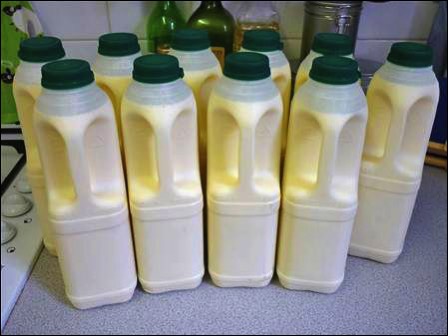
20 pints raw milk
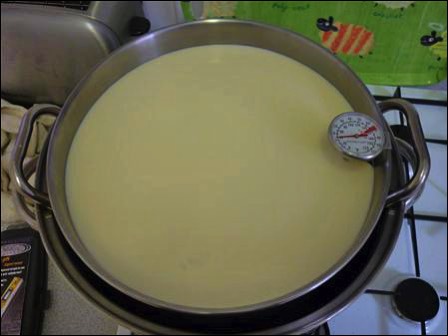
Decanted out
Unfortunately the stock pot would only hold 18 pints, so the rest of the milk was
happily consumed by the cats.
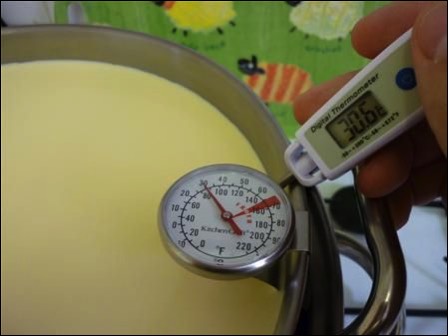
Heating to around 30C
I recently bought a new analogue dairy thermometer with clip to make it easier to monitor
temperatures – seems quite accurate when compared with old digital one which is handy!
After heating to 30C, an extremely small amount of DVI starter was added, as well as a tiny pinch of
rehydrated Penicillium Candidum.
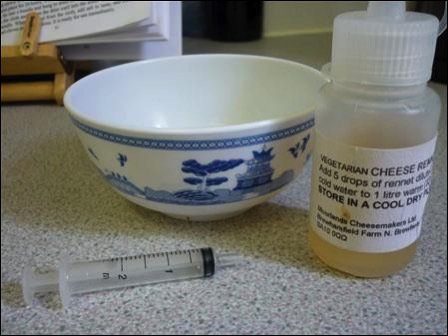
Measuring out rennet
After 30 minutes, when the pH had dropped from 6.7 to 6.5, added diluted rennet and stirred gently
for a couple of minutes, then left to set while maintaining a temperature of 30C.
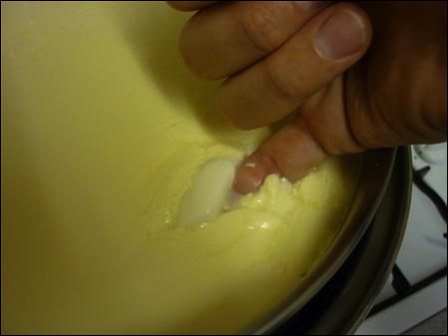
Checking for a clean break
Clean break was achieved after around 6 hours, when the pH had dropped from 6.5 to 5.4

Skimming off the cream
The milk was exceptionally creamy, much more
so than the Jersey milk i’ve used in the past, so had to skim off the milk to get the curd.
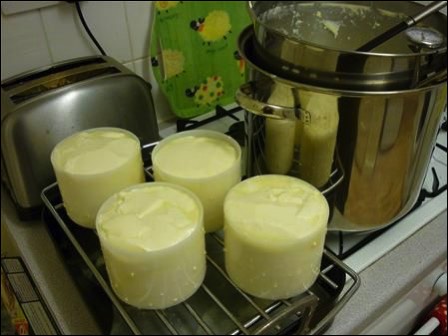
Full lower moulds
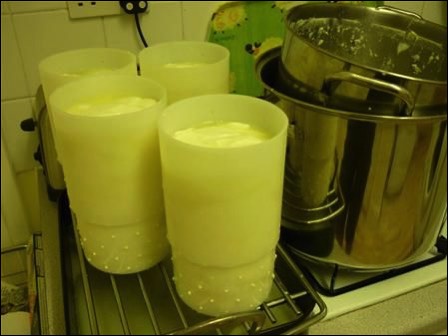
Filling the upper sleeves
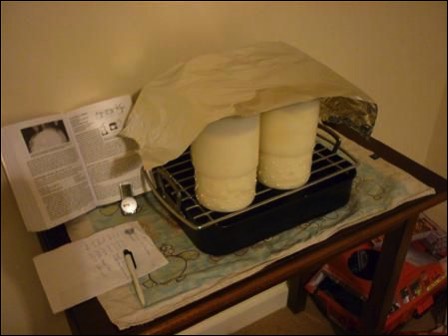
Stored in cat-free zone to drain
Currently draining overnight, to be turned tomorrow morning, then salted tomorrow evening – they’ll reduce in size by about half, so should fit nicely in the lower moulds.
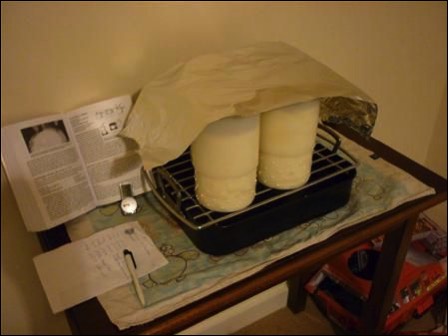
Salted curds in drying area
Curds have been salted and placed in drying area (18C @ 80% humidity), where they will remain for a couple of days being turned intermittently.
http://handyface.wordpress.com/2010/05/16/camembert/
Here is the list of ingredients:
3 very fresh, organic, free range, good quality eggs
70 g raw, unheated, organic honey
300 g raw, organic, pastured cream
50 g good quality organic chocolate (more if you want darker colour)
First you need to separate egg yolks from whites, put the egg whites aside in a small bowl for now.
Add honey to the yolks and mix thoroughly.
In the meantime, melt chocolate in a bowl over hot water; when it is melted cool it down a bit and mix into the egg yolks mixture.
Whip the cream, add to the mixture, mix well.
Beat egg whites with a tiny squeeze of lemon until it is stiff. VERY SLOWLY fold in the egg whites in 3 goes (I can't overestimate the importance of doing it with a spoon v e r y s l o w l y).
If you are using ice cream moulds then just place your ice cream into the moulds and off they go to the freezer, allow at least 6 hours and preferably overnight before eating.
If you have ice cream making machine follow the instructions and make the ice cream.
If you are not using the moulds or the machine cover the batter and place it to the freezer, preferably in some glass container like a bowl. After the first 1.5 hours take it out and mix thoroughly. Repeat 3-4 times with 1 hour intervals.
Variations of this ice cream are endless, experiment and share your experiences. I just tried 2, this one because my boy loves chocolate and the one without chocolate just plain white ice cream simply because after a while I got so tired of chocolate ... can you believe it :)
Enjoy!!!
I just leave the milk out at room temperature in a clean bowl to sour naturally. After a day or two or more (it will depend on the room temperature and how old the milk is) it will be very loosely set if you put a spoon through it. Take a piece of muslin or similar, fold it over and put it in a clean sieve over a large bowl. Ladle the milk into the sieve carefully. The whey will drain through into the bowl leaving the curds in the muslin. As I like to keep my whey as a clear solution I find it best to ladle the whey that has run through back into the sieve until it runs clear.
Let the whey drip through until the drops are coming through very slowly indeed – I find it normally takes up to a whole day. Then take a deep bowl (I use a large upright glass vase), some string and a wooden spoon or similar. Then lift the ends of the muslin carefully and tie the muslin up into a bag shape (à la Dick Whittington) and then tie it closely onto the spoon. Place the spoon across the top of the bowl and let the bag hang freely. Leave for say another half day or more. This will allow more liquid to drain out of the curds. You may find some fine white powder (like on some cheeses) forms on the outside which I ignore.
Undo the bag and scrape out the curds from the cloth and place in a bowl and store in the fridge. We eat it either as a savoury with chopped raw garlic and herbs or as a pudding with sugar and raspberries (defrosted ones are fine). The taste of the curds is not a strong one but it is a useful way of using up one’s raw milk to best advantage.
To clean the cloth for the next time you make curds wash out the cloth thoroughly in water so that any remaining curds are removed. Then place in a pan with water and bring to the boil, drain and dry.
If you are interested in using the whey the best place to start is with Sally Fallon’s book “Nourishing Traditions” http://www.amazon.co.uk/Nourishing-Traditions-Challenges-Politically-Dictocrats/dp/0967089735/ref=sr_1_1?ie=UTF8&qid=1351706296&sr=8-1. This also has other useful information on fermented dairy products.
Even the clear whey still has some milk products suspended in it and ricotta and the Norwegian cheese gjetost are made from whey. I did in fact try making a very simple kind of whey cheese. I very gently simmered the whey until just about all the liquid had evaporated. What was left was a very ‘salty’ and strong flavoured ‘cheese’ – I think it is an acquired taste!
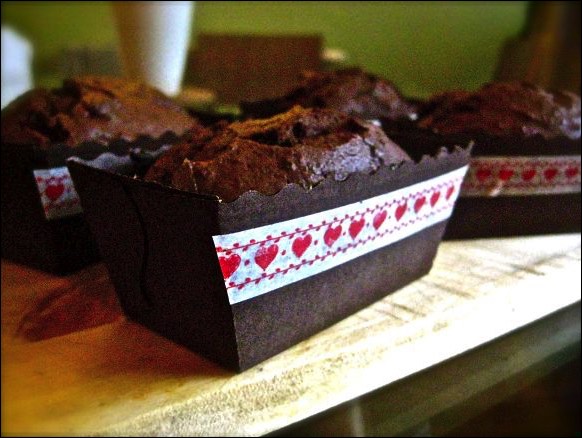
After reading the Guardian article, I confess that I was intrigued. Some years ago, I came across
a blog post about baking with milk skin and was keen to try it out. The author claimed that unpasteurised milk was the best product to use, due to its purer state and high fat content, however back then it was much harder to come by. On Saturday I met with the seller from Hook & Sons at Brockley Market who told me that many more people were starting to buy unpasteurised dairy products for use in baking. The most popular was the unpasteurised buttermilk which, he told me, was the authentic article, unlike the buttermilk we buy in the supermarkets which is merely milk that has been soured. Incidentally, this is how many websites suggest you make your own buttermilk if you cannot find it or afford the hiked-up price. Apparently this buttermilk makes exceptional pancakes and is being adopted by many a pancake house across London. Despite this, he had never heard of anybody having baked with milk skin.
The idea behind this is that you use the milk skin to replace butter in a recipe. The unpasteurised milk is boiled in a pan, the skin gently skimmed off and chilled in the fridge for a day or two until it takes on a butter-like consistency and a slightly sour taste. It is supposed to give the cake a bit of a different dimension, the way that a sourdough starter does with bread.
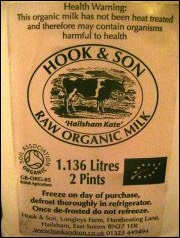
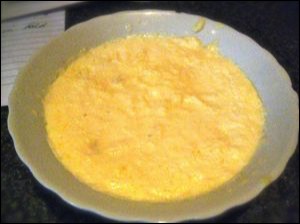
The inspiration from this recipe comes from the fabulous Cannelle et Vanille blog. Despite the comments underneath the post from people saying they have often eaten milk skin cakes, I could find very few recipes online. If you are going to attempt this recipe, it is definitely worth reading Aran’s post here.
1 litre unpasteurised full-fat milk
250ml double cream
100g caster sugar
3 eggs
160g flour
40g cocoa powder
1 tsp baking powder
Pinch of salt
30g stem ginger, finely chopped
30g chocolate chips
Unsalted butter (if required)
You will need approximately 180g for this recipe. If you do not have this much, you can make up the remainder with softened unsalted butter. Preheat the oven to 180°c / 350° f / gas 4. Cream together the milk skin and sugar until light and fluffy, either in a freestanding mixer with a paddle attachment or by hand with a wooden spoon. Add the eggs, one at a time, and mix in using the whisk attachment or an electric hand whisk. If the mixture begins to separate, keep whisking and it will eventually come together.
Sift together the flour, cocoa powder, baking powder and salt and fold into the wet ingredients until combined. Finally, fold in the chopped stem ginger and chocolate chips. Spoon the mixture into mini loaf cases, filling them about three-quarters full – I got eight mini loaves from this recipe. Finally, bake in the oven for around 20 minutes, checking after 15, until risen and a skewer inserted into the centre comes out clean.
Written by Gemma Gannon, and here blog can be found Here
Slightly warm 110g Hook & Son ghee, mix in 1 tbs rosewater, ½ tsp almond essence, 1 tbs water
Mix 200g ground almonds, 75g icing sugar; mix in the ghee mix; chill 30 mins
Divide paste into 6, roll into 30cm cylinders (for 30cm width filo)
Spread out pack of 12 filo sheets, melt some ghee
Paint top ¾ of top sheet with ghee, put cylinder along bottom and roll up; paint next sheet with plenty of ghee and repeat; coil tightly into tin; do for other 5 cylinders
Brush with beaten eggyolk or egg, Mark 4-5 for 30 mins till golden brown; turn onto baking sheet (brush coil with any remaining egg), return to oven 10-15 mins
Invert again, cool
Serve warm; thickly sieve icing sugar over, sprinkle cinnamon from fingers in zigzags
Serve with yoghurt

Total Time: 2 minutes
Serves: 1
INGREDIENTS:
· 2 tsp mashed avocado
· 1 tsp kefir
· 1 tbsp honey
· 1 tsp olive oil
· Glass Jar
DIRECTIONS:
1. Mix all ingredients and put on face (avoiding eyes). Leave on for 20-30 minutes and rinse with water.
Face mask as promised. Thank you all for a wonderful day on Saturday. We will back again next year with more people to see your wonderful farm.